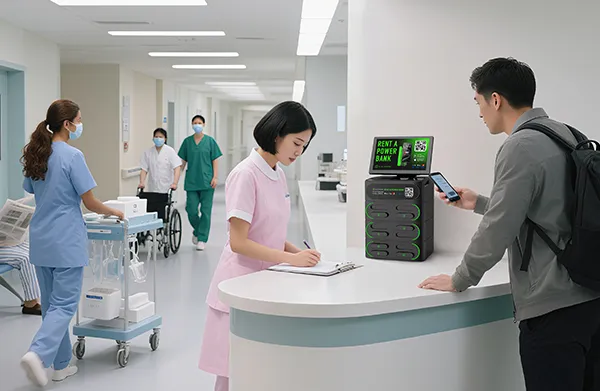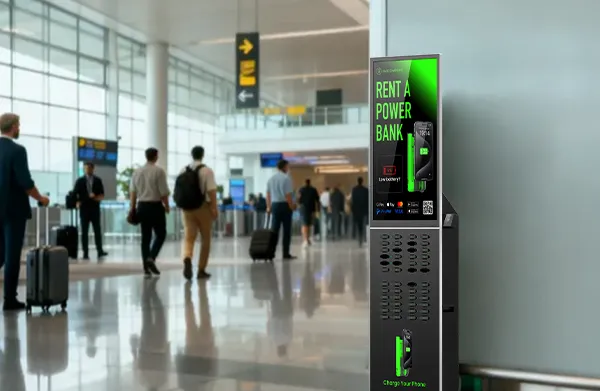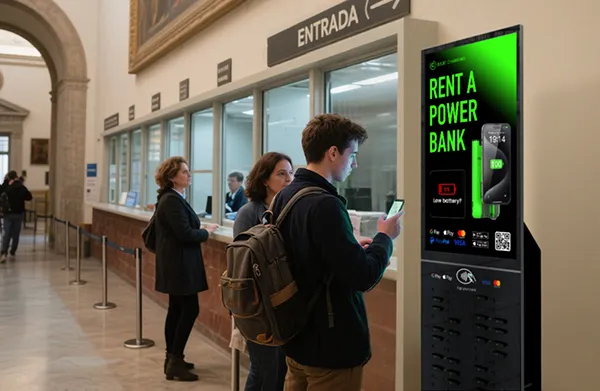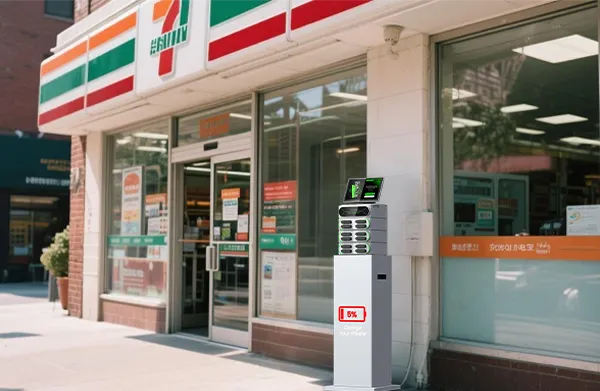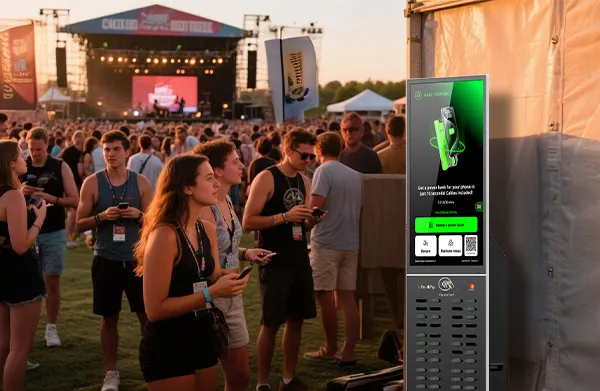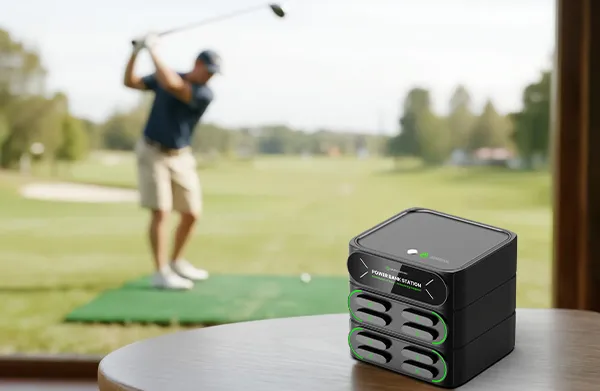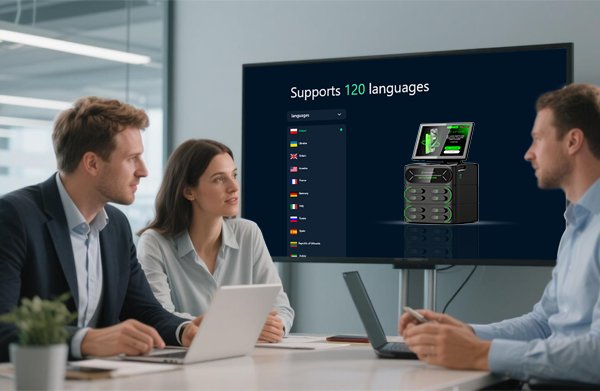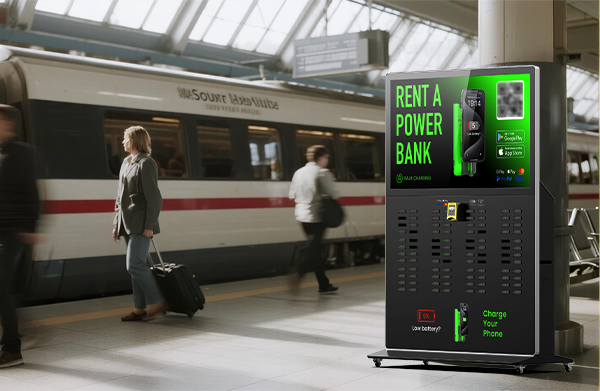Phone charging vending machines provide self-service emergency charging rentals, allowing people to pay on demand to charge mobile phones and other electronic devices. Mobile phone charging stations are placed in shopping malls, restaurants, airports, hospitals, and other public places to meet urgent charging needs when people run out of battery during outdoor activities.
Hospitals have large foot traffic, long user stay duration, and frequent emergency charging demand, making them high-frequency usage scenarios for power bank rental stations. Deploying phone charging stations in hospitals not only provides a stable and frequent user base but also expands multiple revenue channels, bringing higher returns for investors.
1. Why are hospitals premium deployment scenarios for rent-a-power-bank?
According to data from SPRINGER NATURE Link, the average patient waiting time in emergency departments is relatively long in many countries: 129.6 minutes in Australia and the UK, 163.8 minutes in New Zealand, and as long as 181.5 minutes in Canada. Patients generally stay in hospitals for more than two hours. Patients and family members frequently use mobile phones for communication, information search, or entertainment, which creates strong charging demand. Power bank sharing stations can conveniently and efficiently meet people’s charging needs and provide efficient mobile charging services.

Strong emergency demand scenarios and longer rental time
In hospitals, consultation, caregiving, or surgery waiting often lasts several hours or even longer. Patients and families stay in hospitals for a long time. During this waiting period, they use mobile phones more frequently, which consumes battery faster, requiring long-term rentals of mobile phone power banks. Deploying shared power bank rental stations in hospitals results in higher rental rates and longer single-use rental durations than in other venues, generating more revenue for investors.
Large potential user base
Hospitals receive heavy daily foot traffic with long stay times. Patients, families, and medical staff create consistently high traffic across different time periods, ensuring a stable user base for shared power bank rental stations. The utilization rate is high, and the idle rate is low.
2. Why do modular charging cabinets meet hospitals’ high-frequency charging needs?
Flexible stacking, adaptable to user demand
Modular charging cabinets use a module-based design that allows cabinets to be stacked freely according to actual traffic volume. They can be flexibly combined into multiple specifications of 4-port, 8-port, 12-port, 16-port, 20-port, and 24-port to precisely adapt to charging needs at different times and areas.

24-hour self-service, no staff required
Phone charging stations provide 24-hour self-service. The entire process requires no staff intervention, with low maintenance costs. Users can rent through QR code scanning, bank cards, or NFC (Apple Pay / Google Pay / Samsung Pay), and the cabinet automatically ejects a power bank. After charging, users return the power bank at any outlet under the same brand, and the system automatically charges the fee. The process is fully self-service, allowing flexible borrowing and returning anytime.
Dense deployment, higher cost-performance
In high-traffic areas such as hospital lobbies, waiting areas, and inpatient wards, deploying modular charging cabinets achieves efficient coverage. Modular cabinets are easy to deploy flexibly, allowing large-scale placement in multiple areas to expand the coverage of vending machine power banks.
Compared with floor-standing phone charging lockers, modular charging cabinets have higher cost performance and can achieve optimized operational costs through precise layout, helping investors improve ROI and achieve revenue growth.
3. What benefits do power bank stations bring to hospitals?
Meeting emergency charging demand, providing convenience
People stay in hospitals for long periods and habitually use their phones, leading to widespread “battery anxiety.” Phone charging stations provide instant rental service, allowing people to charge anytime. Mobile charging stations improve hospital service quality and create a friendlier and more convenient medical environment for patients and families.
No management or maintenance required, zero-cost cooperation
Hospitals do not need to allocate staff for managing or maintaining power bank vending machines. Rental power banks are fully self-service, with users completing the borrowing and returning process independently. Hospitals only need to provide space, solving the frequent charging needs of their large daily foot traffic.
Shared power banks are deployed and maintained for free by investors. Hospitals do not need to purchase equipment or allocate staff for maintenance, yet they can provide convenient charging services to patients, families, and medical staff, improving the hospital’s service experience at zero cost.
Advertising screen promotion, playing medical knowledge and public service content
Shared power banks come with advertising screens, which hospitals can use for public awareness campaigns, customized health information (such as disease prevention tips), and QR codes for patients to scan to access treatment guides. This helps hospitals improve their public image.
4. Why can deploying power bank rental stations in hospitals guarantee investors higher profits?
High-frequency consumption venues with high usage
Hospitals have huge daily traffic, with patients waiting for outpatient services, medical checks, or staying for inpatient care. People’s stay duration in hospitals is longer than in other places, which means longer device rental usage. The frequent rental of phone charging stations generates greater revenue for investors.
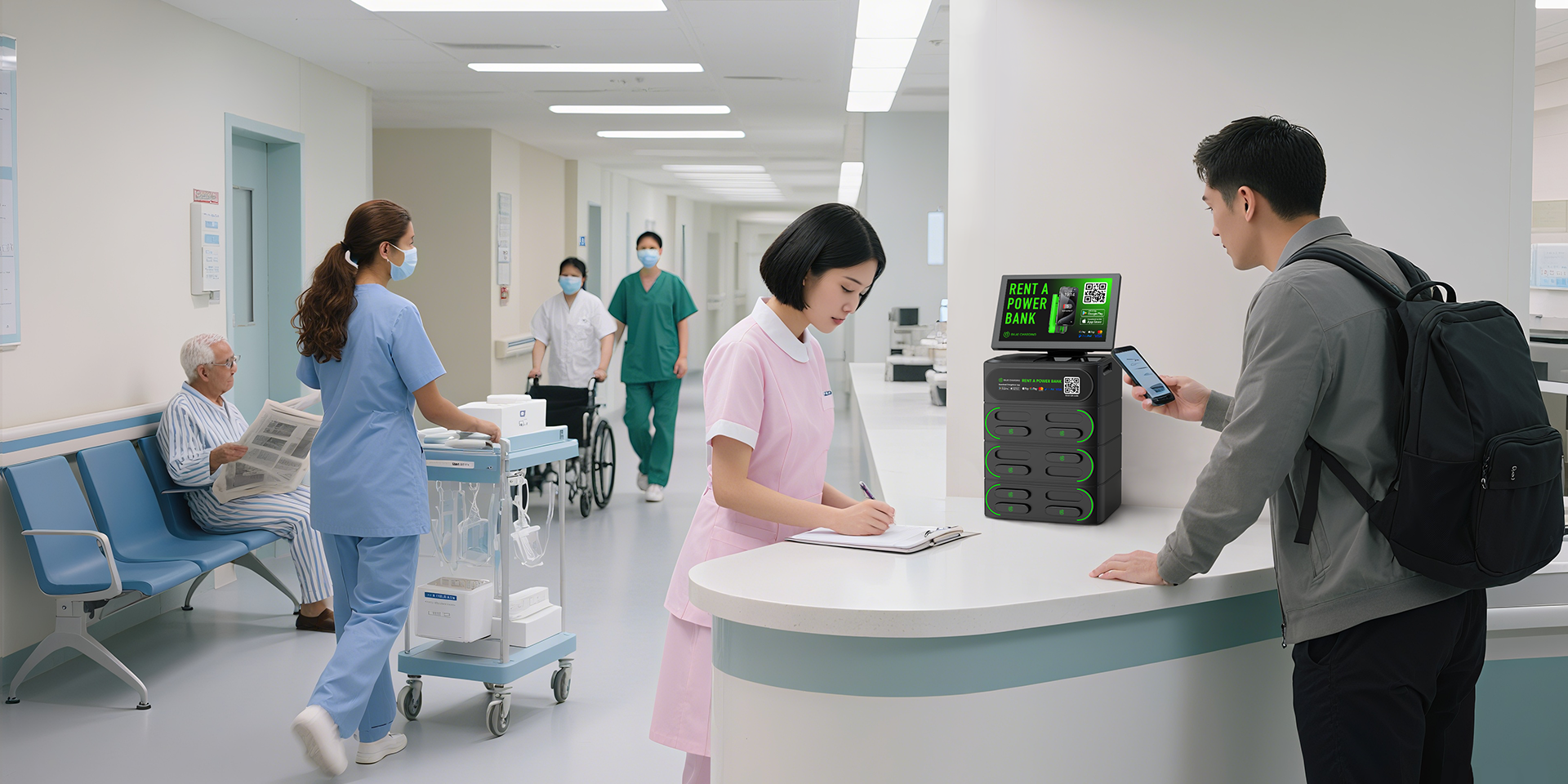
Seizing premium hospital scenarios to build brand influence
Deploying power bank stations in hospitals enhances investors’ brand influence locally, creating favorable conditions for business expansion. Hospitals serve as credibility endorsements, helping investors more quickly expand phone charging lockers to shopping malls, transport hubs, and other venues.
Summary
Hospitals have large foot traffic, long average stay durations for patients and families, and frequent mobile phone usage during waiting periods, which creates strong charging demand. This “rigid demand” leads to higher rental rates and longer single-use rentals, boosting the device’s daily revenue and accelerating capital return. Investors who deploy power bank sharing in hospitals can significantly increase the ROI of phone charging stations.
Hospitals serve as brand endorsements for investors. Once mobile phone power banks successfully enter hospitals, they enhance public trust, making it easier to expand shared power bank business into other venues.
August 31, 2025


